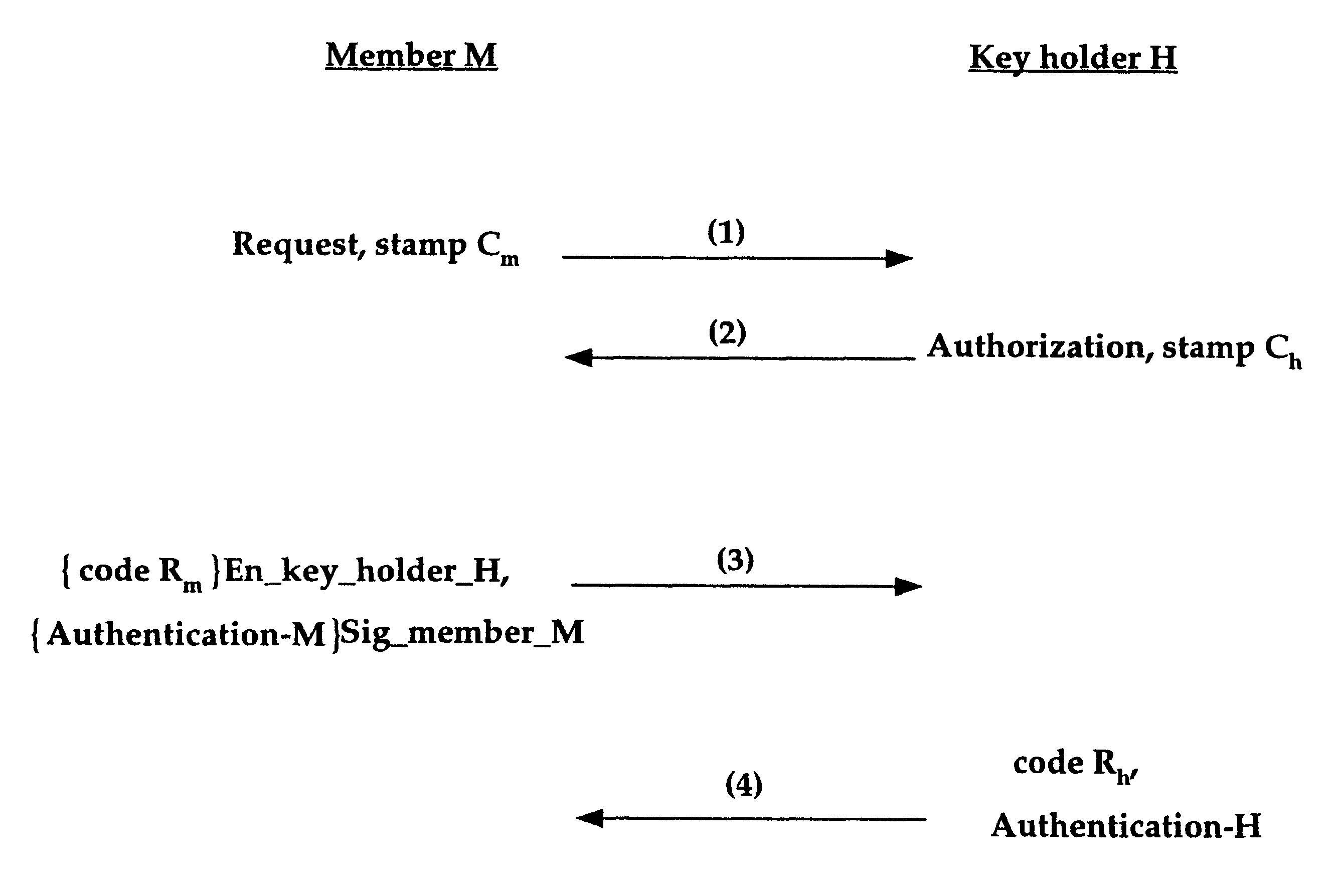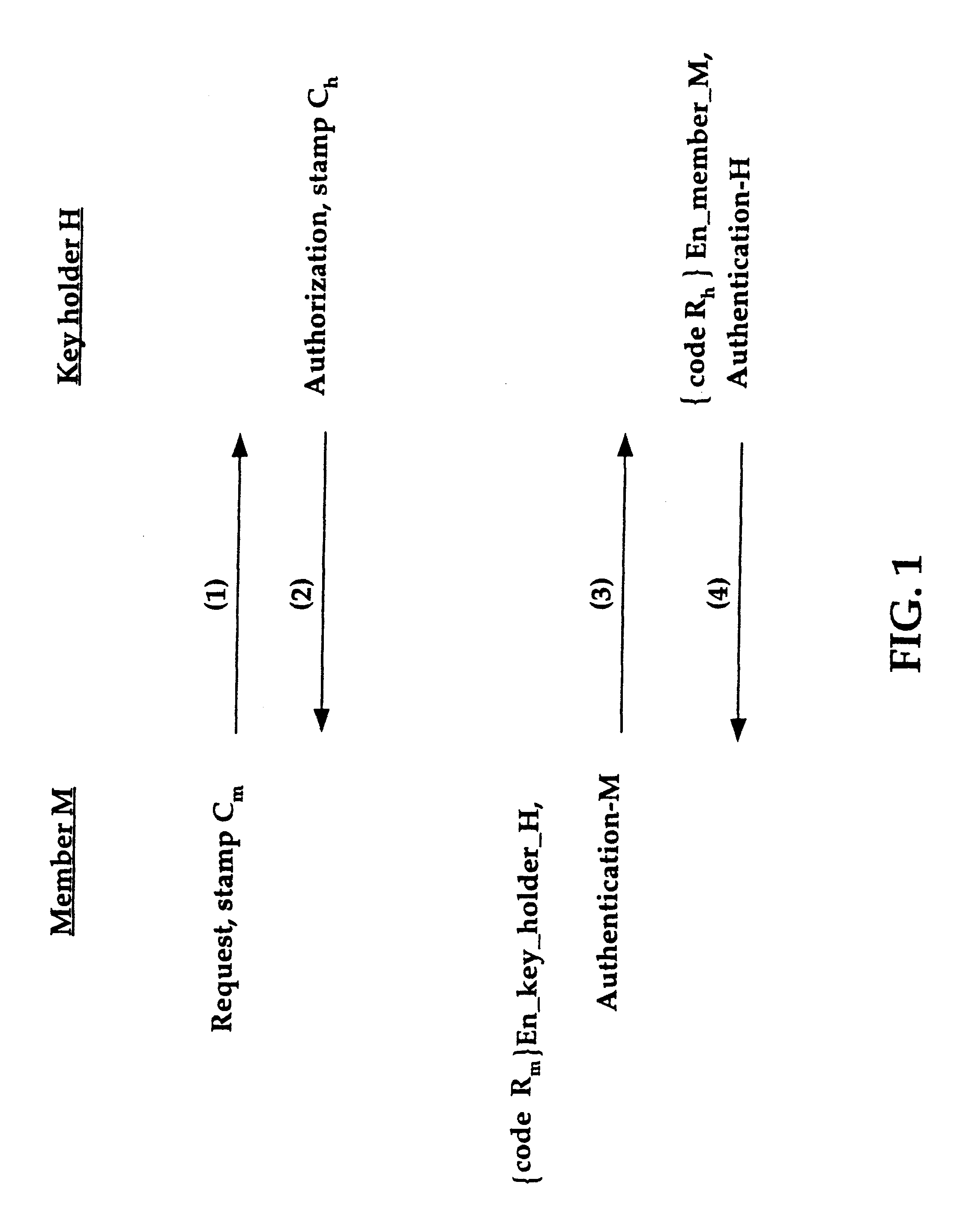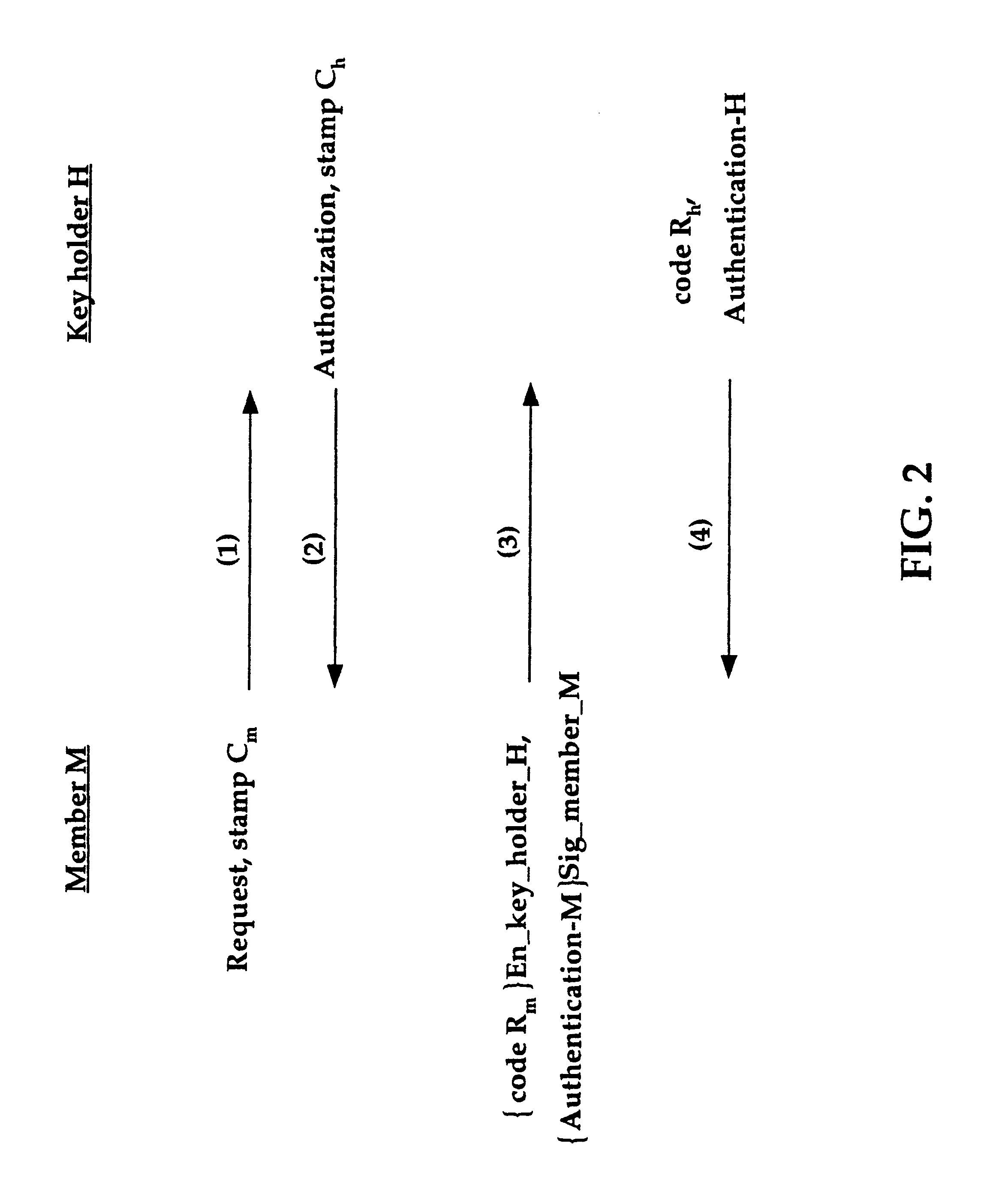Group key distribution
a group key and key technology, applied in the field of electronic communication, can solve the problems of more difficult breaking of public/private key encryption, and achieve the effect of reducing overhead, efficient addition of new members, and low cos
- Summary
- Abstract
- Description
- Claims
- Application Information
AI Technical Summary
Benefits of technology
Problems solved by technology
Method used
Image
Examples
Embodiment Construction
A bank may have, for example, a network NA including N, number of routers A connecting a plurality of automated teller machines, which needs to communicate with a network NB including N.sub.2 number of routers B connecting other banks and banking databases. Each router A securely communicating with each router B results in N.sub.1.times.N.sub.2 secret keys. However, if every router A in network NA belongs to the same group GA requiring one secret key to communicate with every router B in network NB, the number of secret keys is reduced to N.sub.2. By the same analogy, if N.sub.2 number of routers B in network NB belong to the same group GB using one key to communicate with network NA, the number of required secret keys is reduced to one, for both communication from group GA to group GB and from group GB to group GA. The key distribution method in accordance with the present invention reduces memory and performance requirements to store and manage a plurality of secret keys.
Virtual P...
PUM
 Login to View More
Login to View More Abstract
Description
Claims
Application Information
 Login to View More
Login to View More - R&D
- Intellectual Property
- Life Sciences
- Materials
- Tech Scout
- Unparalleled Data Quality
- Higher Quality Content
- 60% Fewer Hallucinations
Browse by: Latest US Patents, China's latest patents, Technical Efficacy Thesaurus, Application Domain, Technology Topic, Popular Technical Reports.
© 2025 PatSnap. All rights reserved.Legal|Privacy policy|Modern Slavery Act Transparency Statement|Sitemap|About US| Contact US: help@patsnap.com



